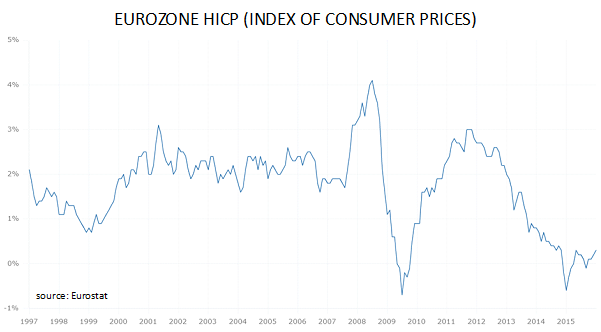The European Central Bank last night announced sweeping new measures to stimulate the European economy but perhaps undid the impact of such a move by indicating at a later press conference that there further interest rate cuts are unlikely.
The changes announced initially pleased financial markets. Westpac described the changes as “over deliver[ing] in spades”.
So firstly, what are the ECB policy changes?
- ECB deposit rate cut from -0.30% to -0.40% (overnight lending rate to ECB)
- Marginal lending facility from 0.30% to 0.25% (overnight borrowing rate from ECB)
- Refinancing rate from 0.05% to 0.00% (borrowing rate from ECB for up to one week)
- Targeted long term refinancing rate operations (TLTRO) rate to equal refinancing rate
- QE increased from €60 billion per month to €80 billion per month
- Expand the range of securities to be purchased
The changes by themselves were huge. According to JB Were, there were two surprises in particular that markets liked; the cut in the refinancing rate and a €20 billion increase to €80 billion per month in the asset purchase programme instead of the expected €10 billion.
However, comments made by ECB president Draghi in the Q&A session which followed reversed any positive impact made in the press release. Among them were Draghi’s comments which indicated deeper cuts in the deposit rate may hurt the banking sector. Bond yields which had fallen after the initial announcement reversed direction and then rose past their starting points. By the end of the European day, US, UK and German 10 year bond yields had risen between 5-7bps, equity markets sold off and the euro strengthened against major currencies. Investors appear to have positioned themselves for the likelihood of further investor-friendly/weak euro policies but as ANZ put it, “The market interpreted all that [Draghi’s comments] as meaning the ECB has reached the limits of its interest rate cutting cycle.”
The ECB and its president is getting a reputation for not meeting market expectations and being “behind the curve”. The last time the ECB cut rates in December, markets were expecting larger cuts or effectively what was delivered in last night’s changes. The Bank is also at risk of losing credibility with markets as the messages it is sending seem to be confused and lacking consistency, which may be the result of divisions within the ECB board.
At any rate the ECB, if required, may need to look for new measures to stimulate the economy in future as the money printing and negative interest rates seem to be having less of an impact or as one commentator put it, Quantitative Exhaustion.
Click here for the actual ECB statement and here for the ECB press conference Q&A


